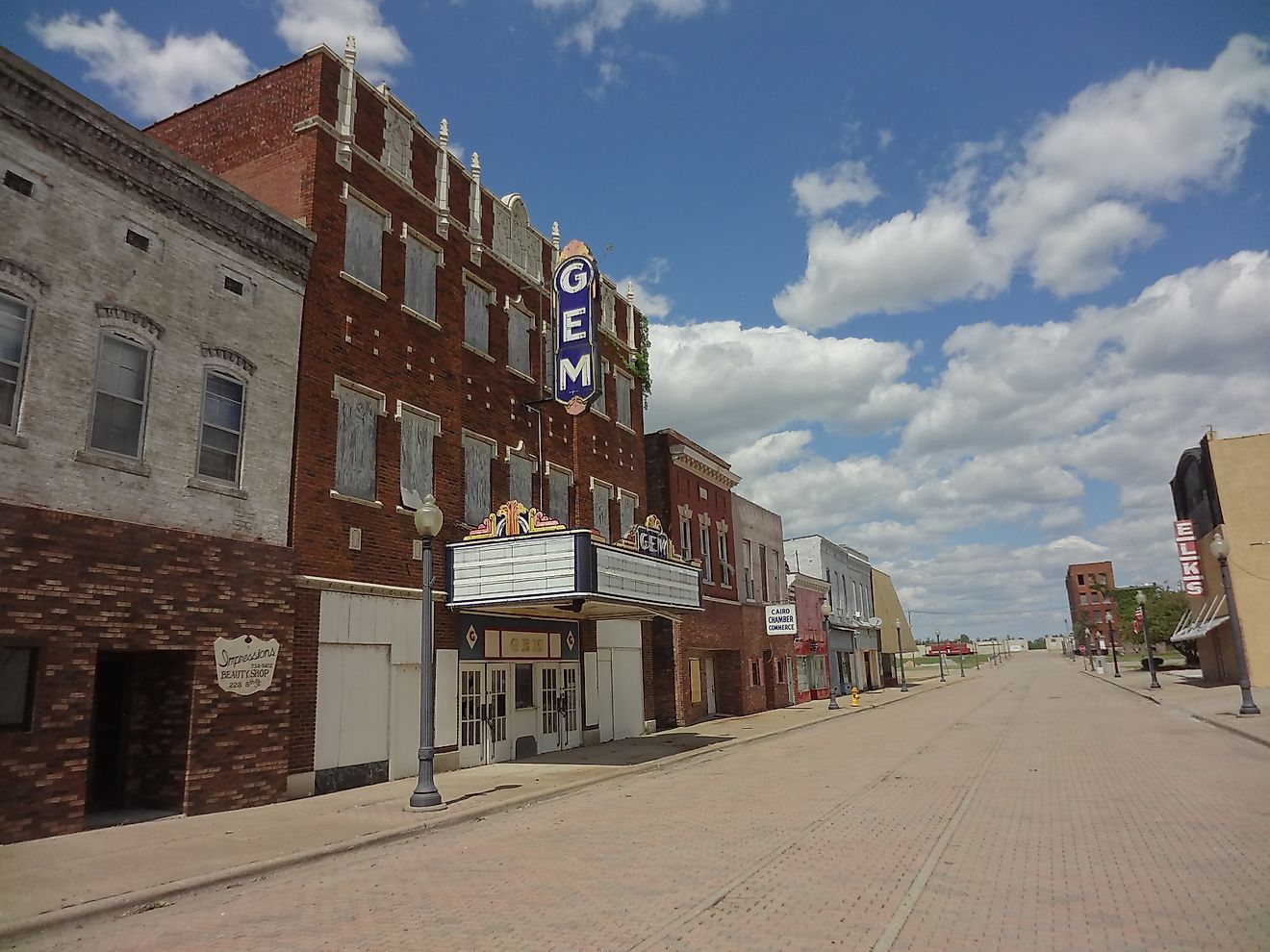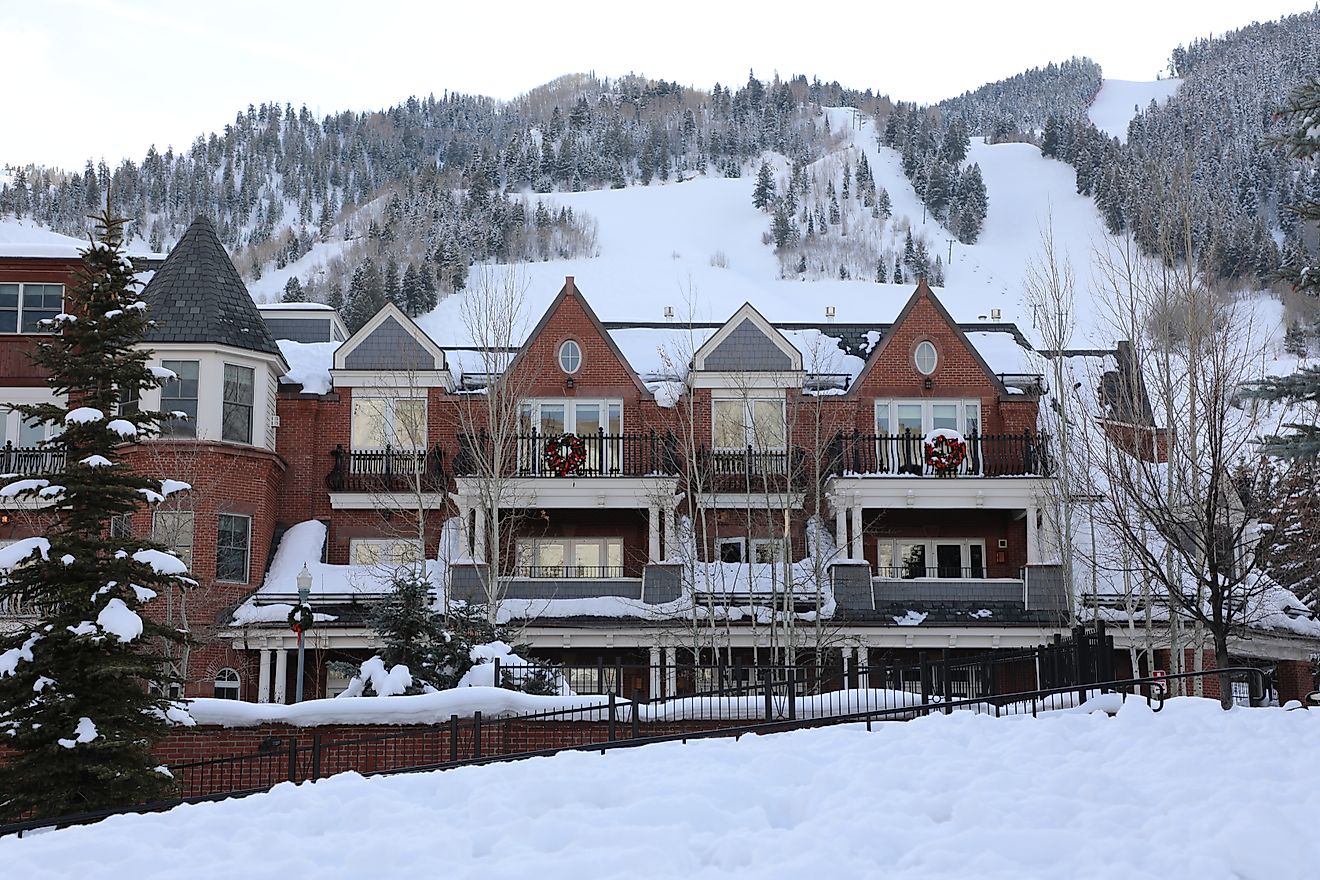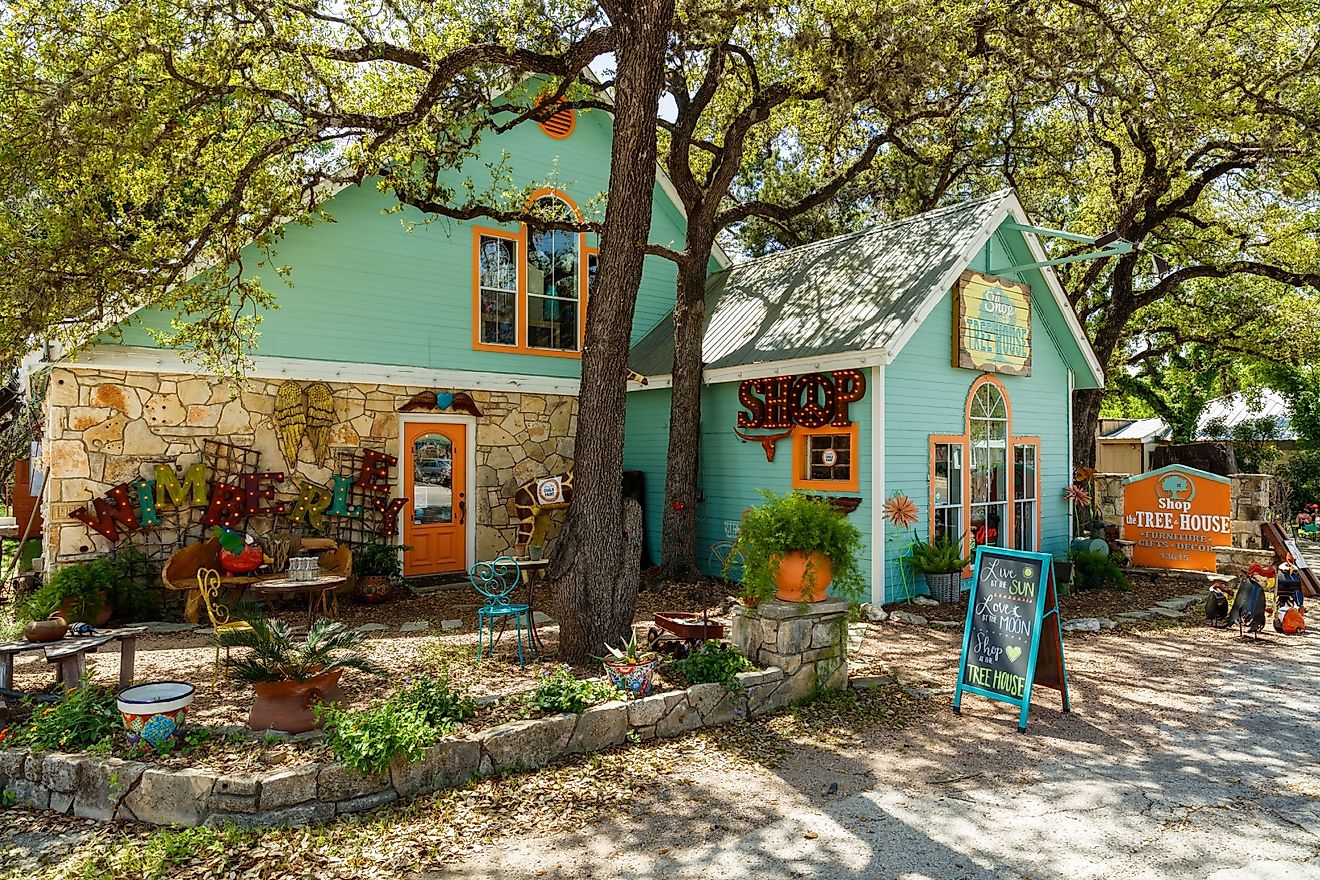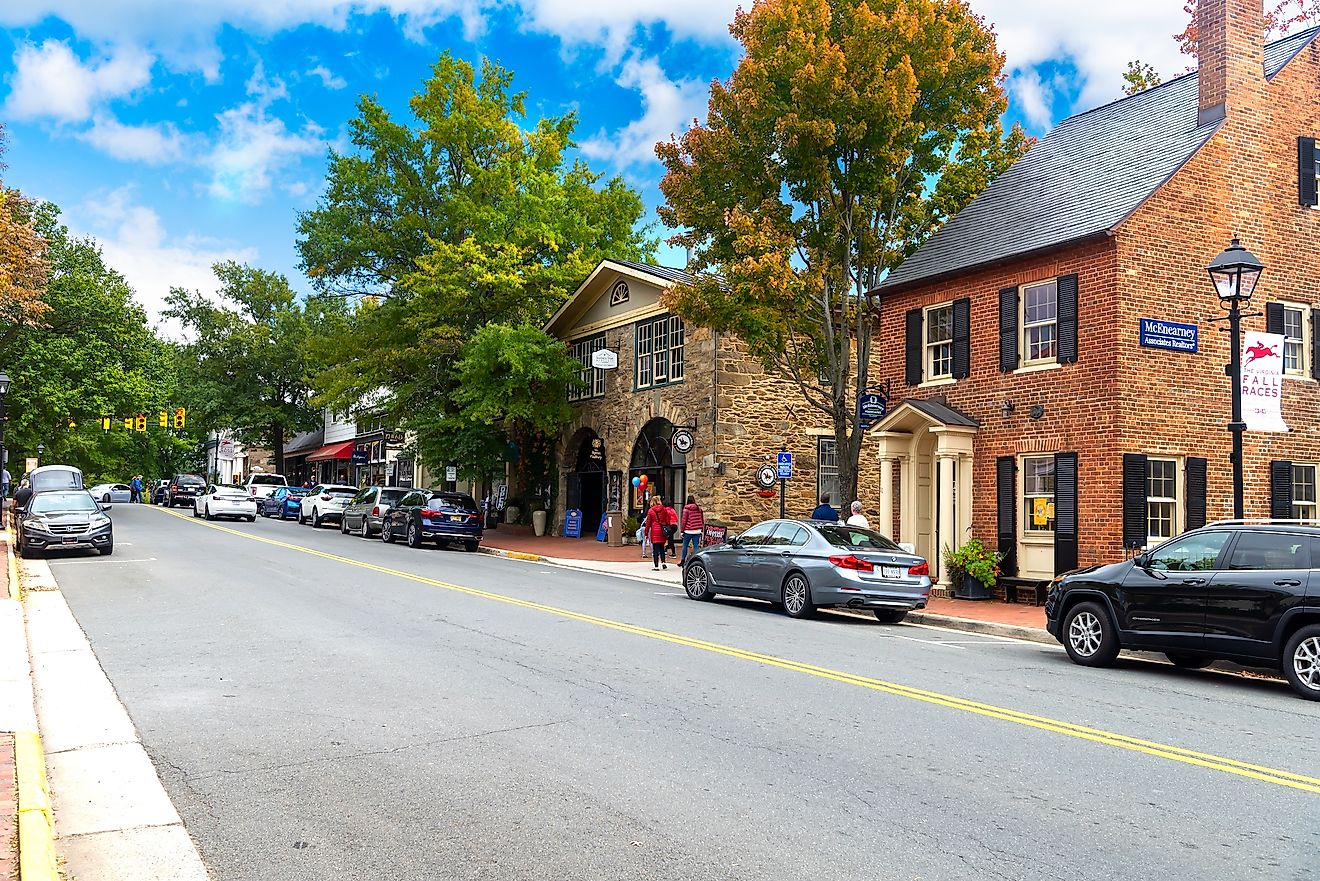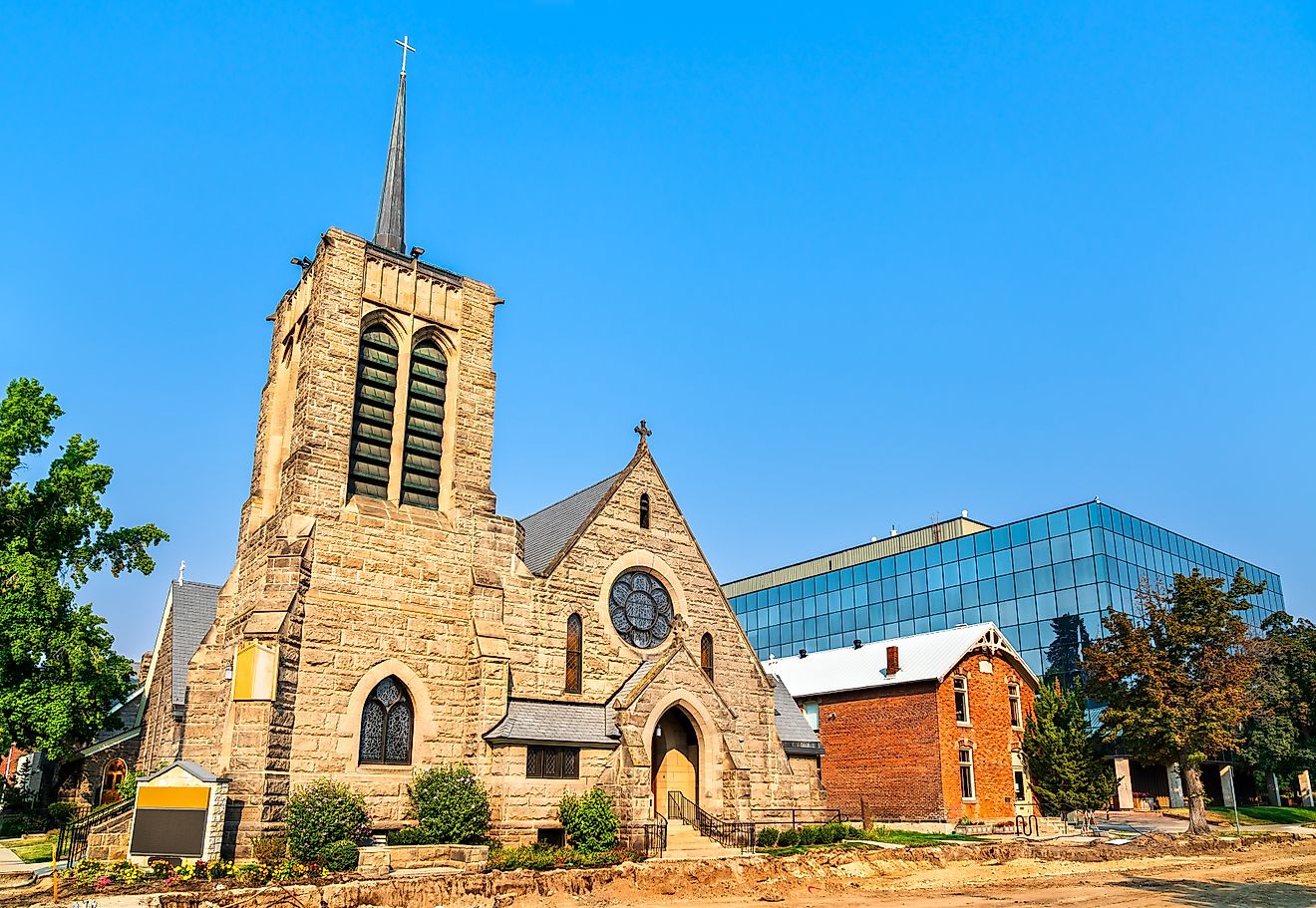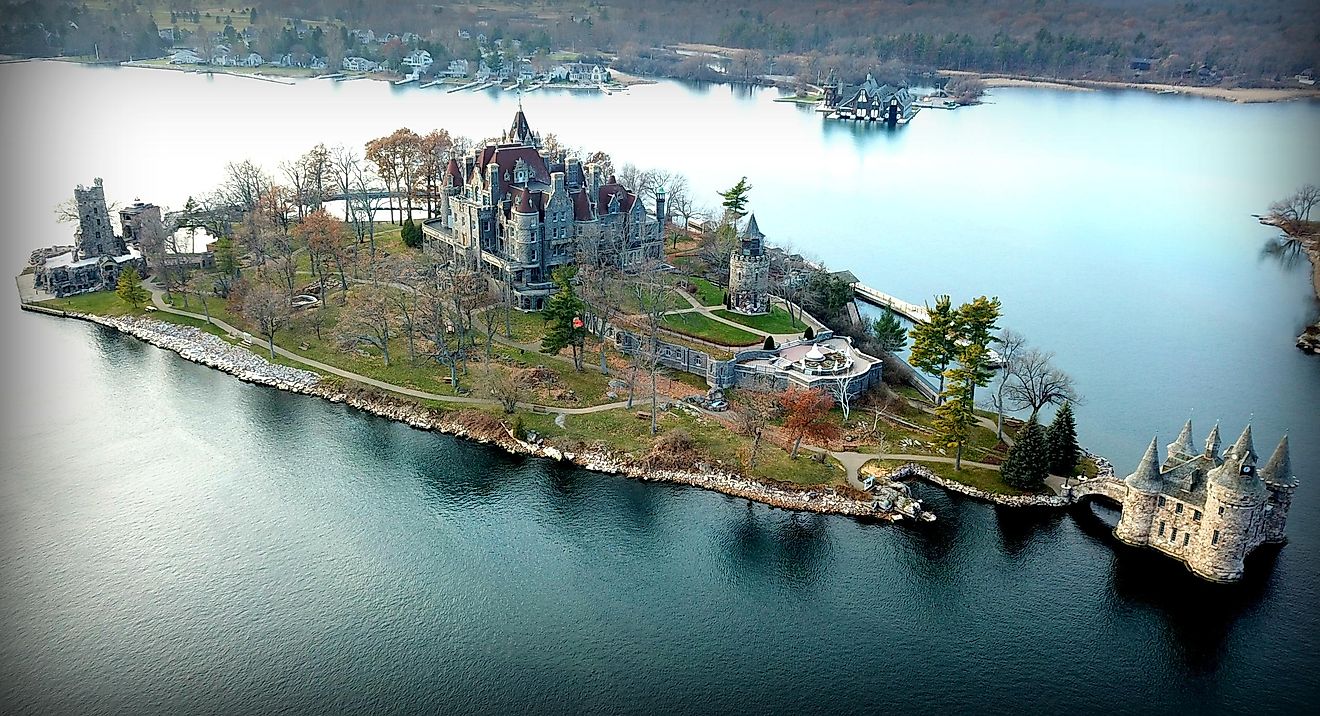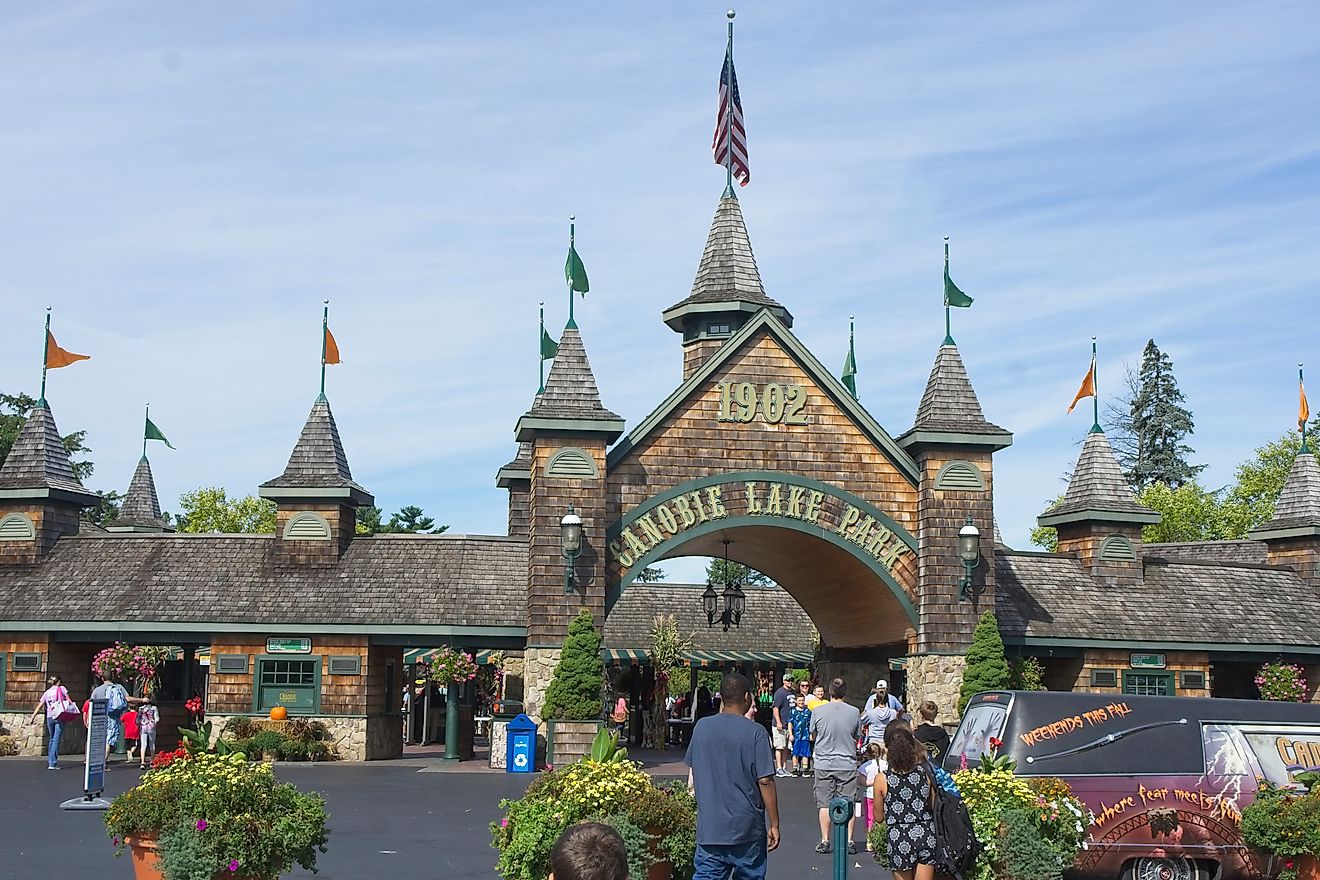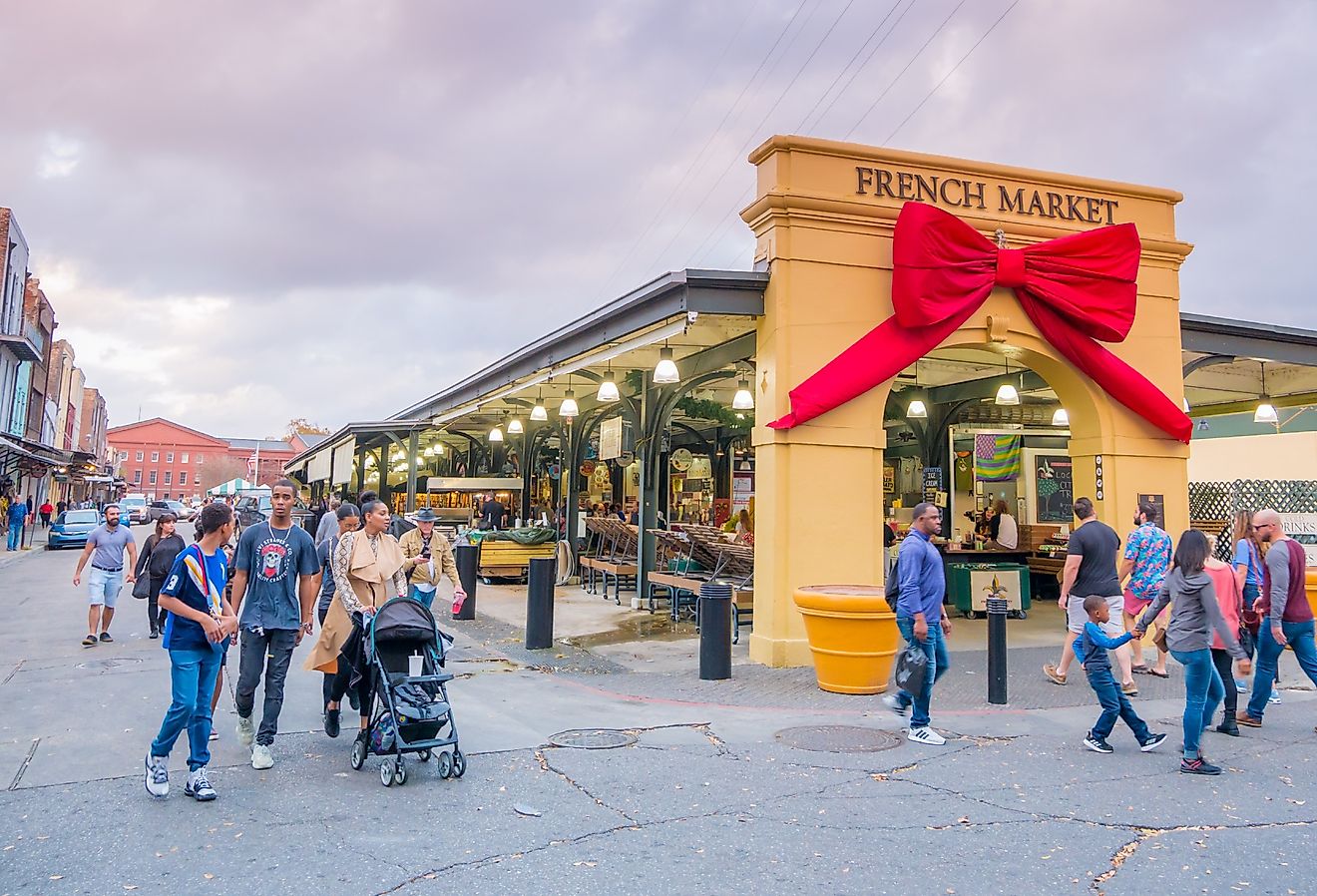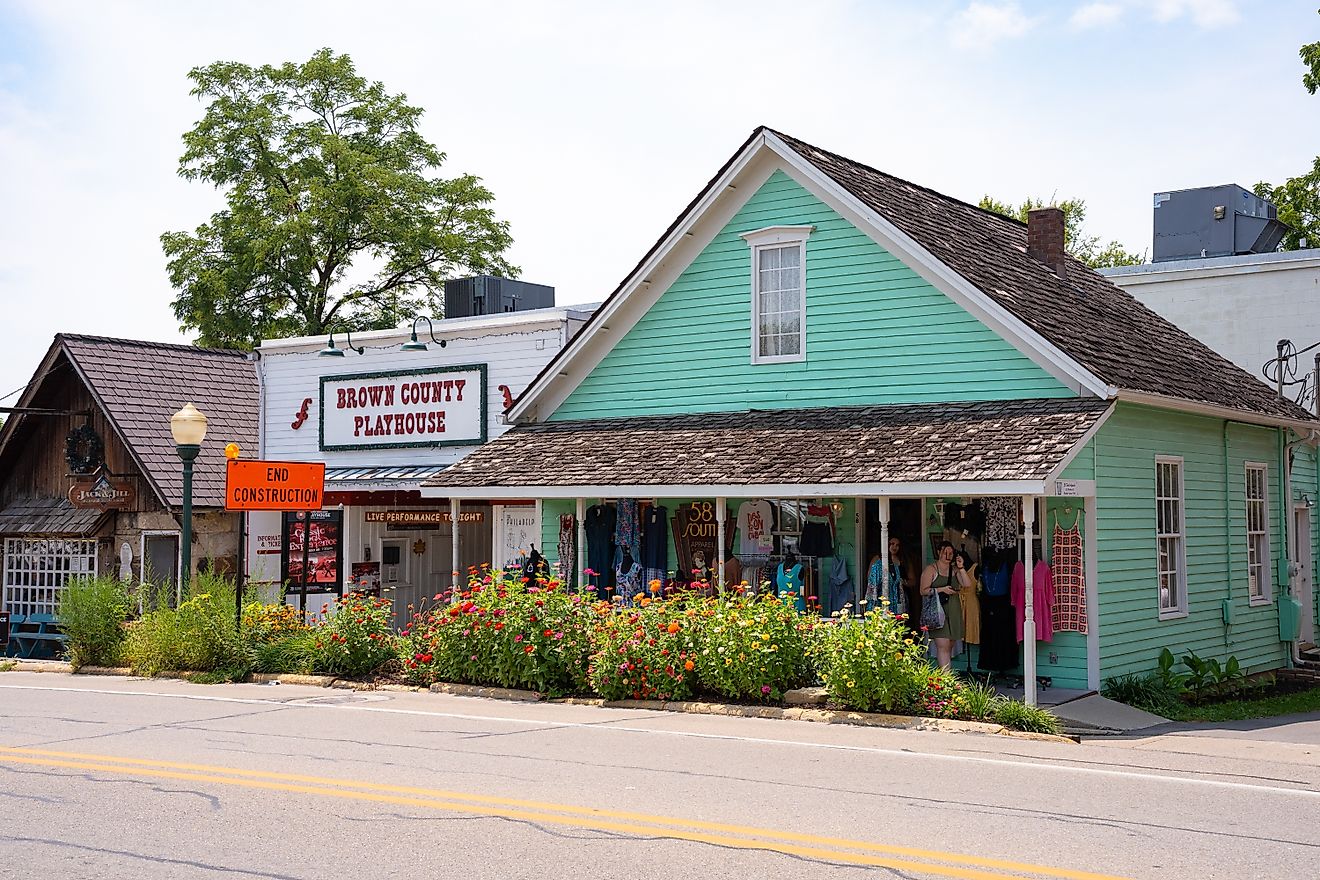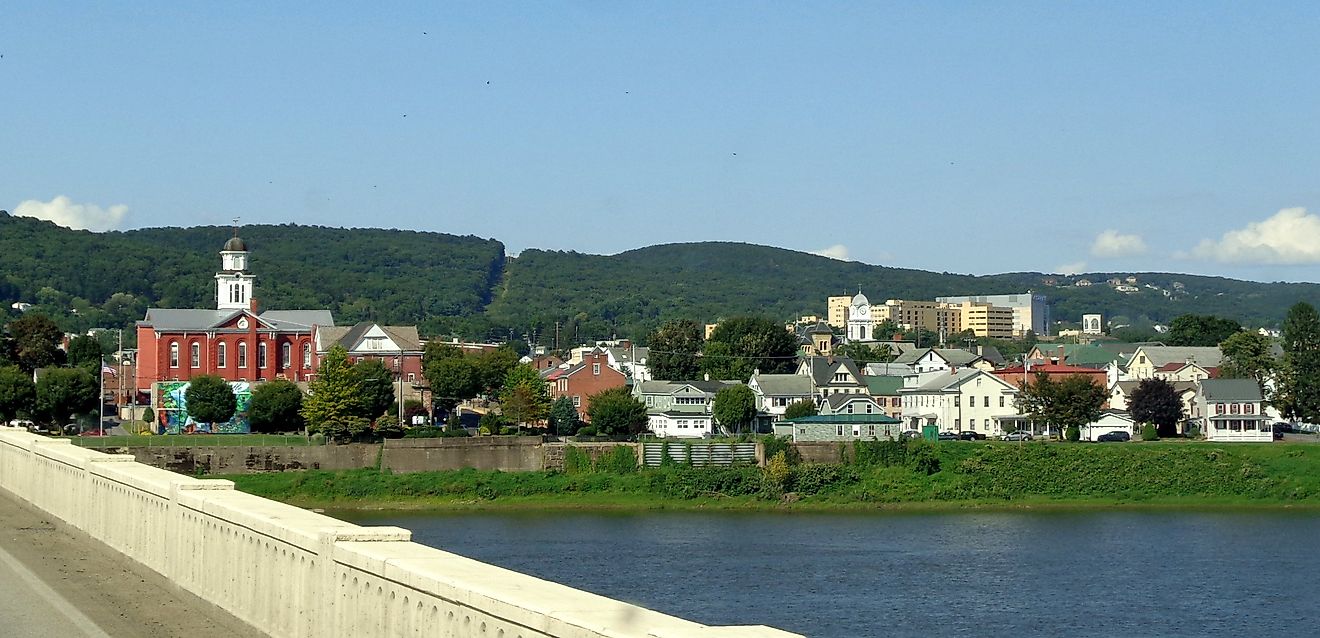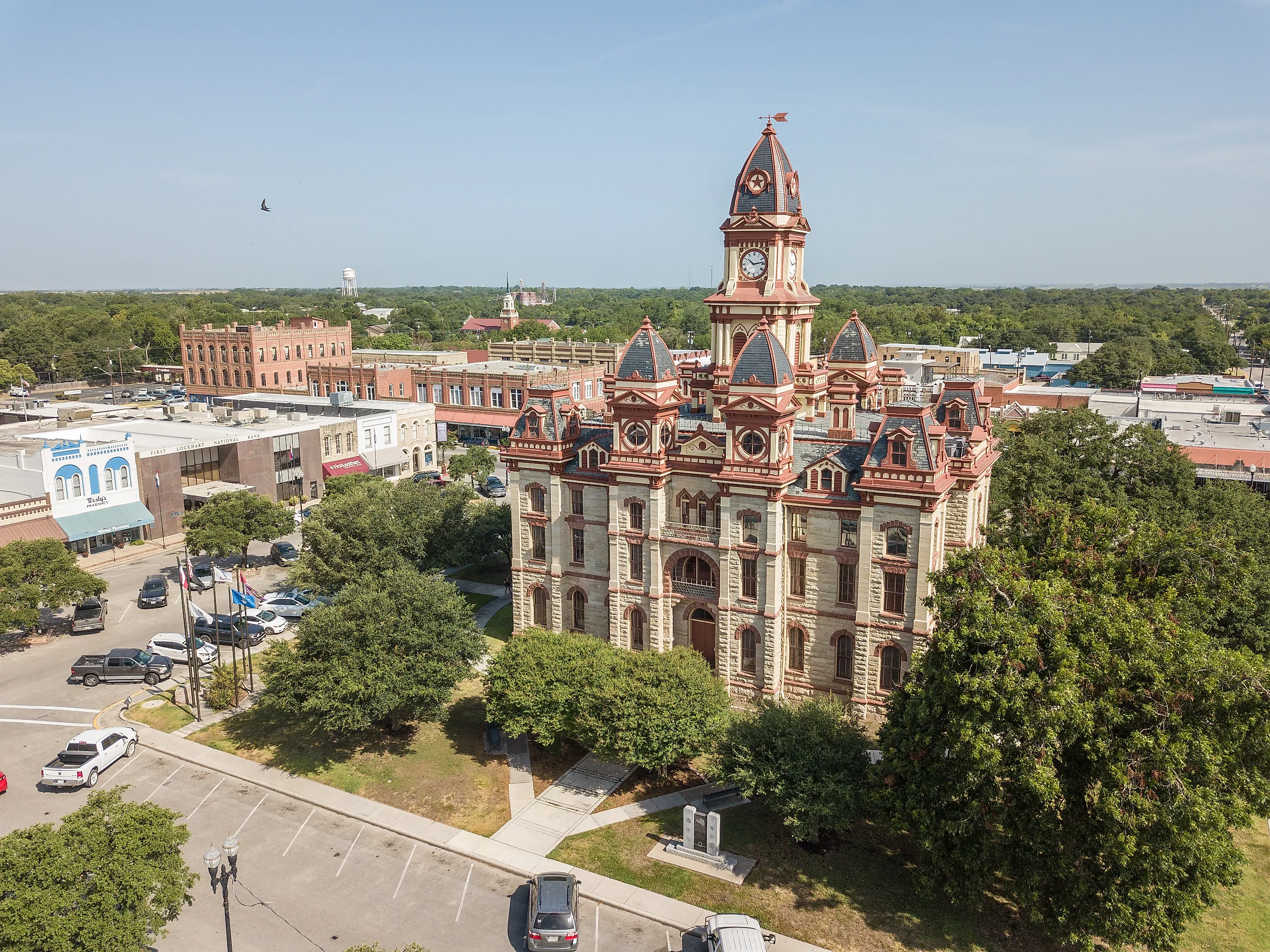
8 Most Charming Town Squares In Texas
Texas is a state of horizons, but its clearest stories fit inside a single city block. For this list, the filter was practical, not nostalgic. Each square passed a simple test: a working public building on the edge, a place to sit without paying, a named independent spot to eat within 100 steps, and one small museum or library anchoring the history.
The eight here show how varied that work can look. Fredericksburg’s Marktplatz retains its German footprint. Lockhart’s blocks move to the rhythm of smokehouses. Jefferson’s brick streets still face the bayou that built them. Goliad’s square sits within reach of a Spanish presidio and mission walls. All that and so much more offers eight different blueprints; one Texas idea that still works.
Granbury
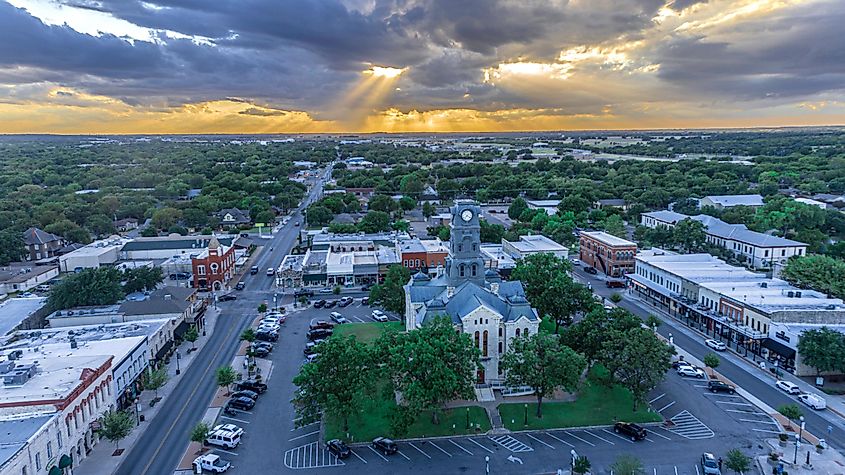
Granbury’s square is defined by two details that set it apart in Texas: it was the first courthouse square in the state to be listed on the National Register of Historic Places, and it boasts an operating 1886 opera house that still runs weekend shows. The limestone-faced buildings circling the square have retained their 19th-century scale, with the Hood County Courthouse anchoring the center. Granbury’s walkability, rare for towns of its size, makes its downtown unusually cohesive, no sprawl, no highways, just dense, intact architecture. Many storefronts are original to the late 1800s, including the Nutt House Hotel, opened by Jesse James’s cousin, and still in operation.
Main Street is dense with specific, grounded experiences. At the Granbury Opera House, the Granbury Theatre Company performs “Oklahoma!” and “Steel Magnolias” with local casts in a plush, red-curtained space restored with balcony seating. Nearby, Paradise Bistro & Coffee Co. serves brunch on a shady patio facing the courthouse. Down the block, the small but curated Hood County Museum (in the former jail) keeps archives and pioneer-era exhibits. A five-minute walk leads to Granbury City Beach Park, white sand, rentable kayaks, and a pier set on the edge of Lake Granbury, one of the only true lakeside beaches in a Texas downtown.
Fredericksburg
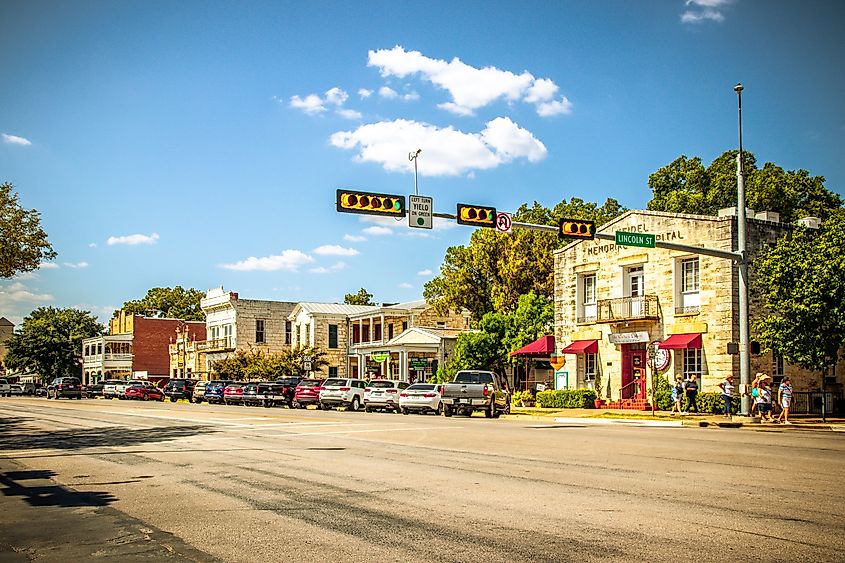
Fredericksburg’s town square centers on the Marktplatz, a German-style public green that still holds traces of its origins as a mid-1800s immigrant gathering point. What distinguishes the town is its cultural duality: deep Texas Hill Country roots layered over an intact German settlement grid. The Vereins Kirche, a reconstruction of the town’s original multi-use building, stands in the middle of the square where church, school, and town hall once shared a roof. Street signs on Main remain bilingual. This fusion is not a gimmick, it’s embedded in the layout, the food, and the cadence of Fredericksburg’s daily life.
The Pacific War Museum, spanning multiple buildings just off the square, offers a dense and focused experience curated in part by Admiral Chester Nimitz’s legacy; the Nimitz Hotel where he was born anchors the collection. At Otto’s, a block away, duck schnitzel and jäger spätzle are plated in a minimalist bungalow behind the square. Twisted Sisters Bake Shop serves orange rolls and espresso on an unassuming side street near the Fredericksburg Art Guild, which houses local oils, ceramics, and small-run prints. Despite its tourism profile, Fredericksburg’s core stays functional: locals line up for mail at the post office just yards from the park’s Maibaum (maypole).
Lockhart
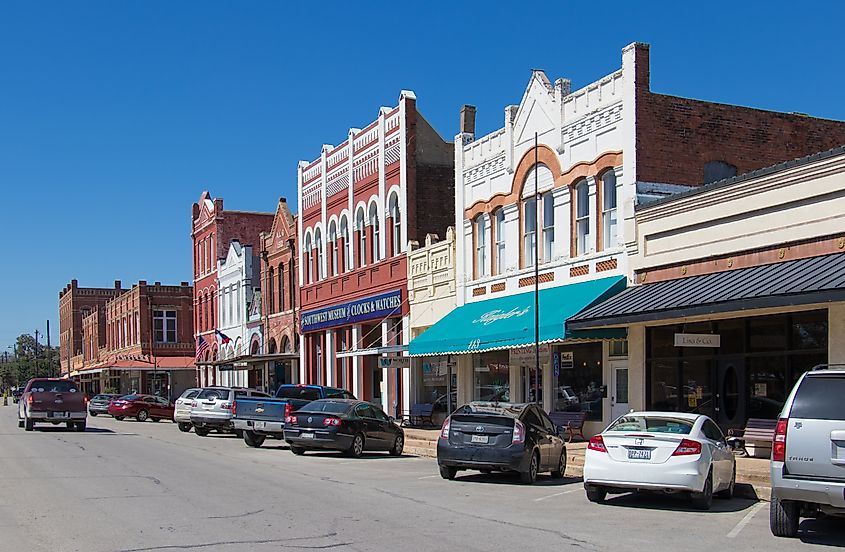
Lockhart’s square is arranged like a set piece, with the 1894 Caldwell County Courthouse at its center, designed in Second Empire style with rust-colored stone and a clock tower visible for blocks. But what defines Lockhart is its unbroken relationship with barbecue. The town was declared the “Barbecue Capital of Texas” by the state legislature, and three of its most historic smokehouses, Kreuz Market, Black’s Barbecue, and Smitty’s Market, are within a short walk or drive from the square. Smitty’s, just a block off the courthouse, still runs its fire directly on the floor, the pit room filled with smoke and soot-black walls.
Main Street holds its own between meals.Commerce Gallery, housed in a former department store, showcases contemporary visual art from regional painters and sculptors. It was co-founded by Donna Blair and Tamara Carlisle, and serves as a vibrant hub in downtown Lockhart’s arts community. Just off the square, Chaparral Coffee serves cortados in a stripped-down brick storefront with an in-house vinyl collection and a friendly, community-focused vibe.The town’s square isn’t preserved for appearances, it’s actively used, with bail bonds, barbers, and print shops in the same block as bookshops and bars. That friction gives Lockhart its shape.
Jefferson
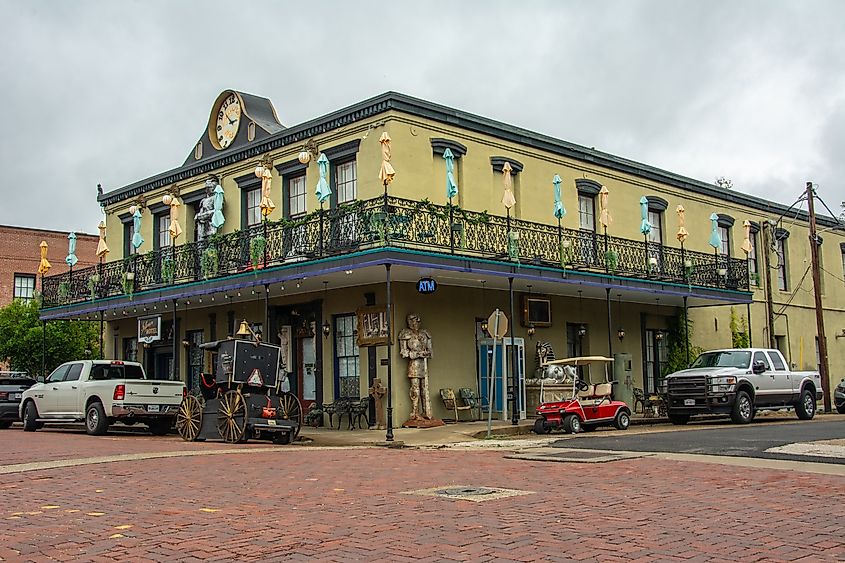
Jefferson developed not around a square but around the river, Big Cypress Bayou, which once made it the second-busiest port in Texas. Before the railroads bypassed it, Jefferson was a trade hub, and that commercial density remains preserved in blocks of narrow-front brick buildings with cast-iron facades. The historic district has more than 70 state landmarks within walking distance, anchored by the 1907 Jefferson Carnegie Library and the Marion County Courthouse, both fronting open brick streets that curve around the old city layout. The town's layout resists the traditional Texas square, but that variation is what gives it texture.
The Jefferson Historical Museum occupies the former federal courthouse and post office, four floors of maps, ledgers, Civil War artifacts, and East Texas regional archives. Across the street, the Excelsior House Hotel has been in operation since 1858 and once hosted Ulysses S. Grant. Jefferson General Store sells floats, hand-dipped candy, and cast ironware under a pressed tin ceiling, with a 5¢ jukebox at the door. Jefferson doesn’t frame its charm, it operates within it.
Brenham
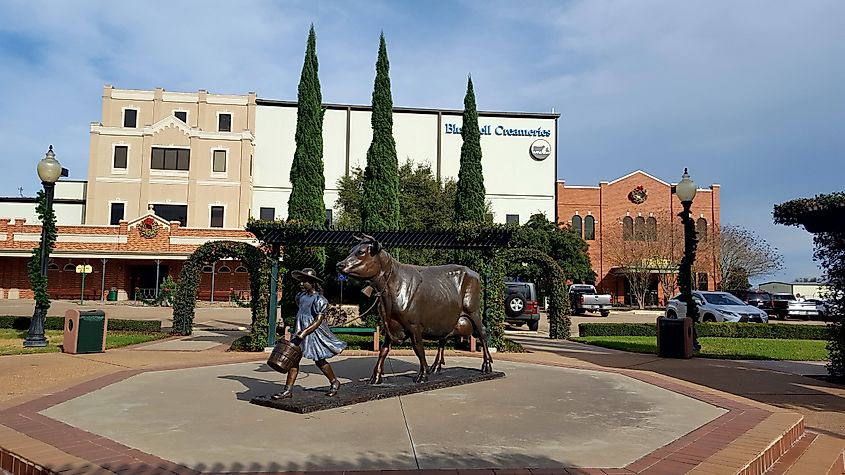
Brenham’s layout reflects its origins as a railroad town, Commerce Street parallels the old Southern Pacific line, and the downtown square emerged from that axis rather than the traditional courthouse-first grid. What distinguishes it today is the density of early 1900s commercial buildings still in daily use, many with intact signage and tin ceilings. The Washington County Courthouse sits on slightly elevated ground, surrounded by a square that maintains regular civic activity. Unlike towns where preservation has frozen development, Brenham’s downtown continues to house working banks, attorneys’ offices, and print shops, alongside galleries and restaurants.
At Truth BBQ on the north edge of town, whole briskets are carved to order beside steel smokers that run nearly nonstop. Blue Bell Creameries operates a Visitor Center and observation deck less than a mile from the square, where guests watch the production floor before sampling flavors in the parlor. Sealand Seafood & Steak, just off the main square, serves crawfish étouffée and fried oysters on metal trays.
Boerne
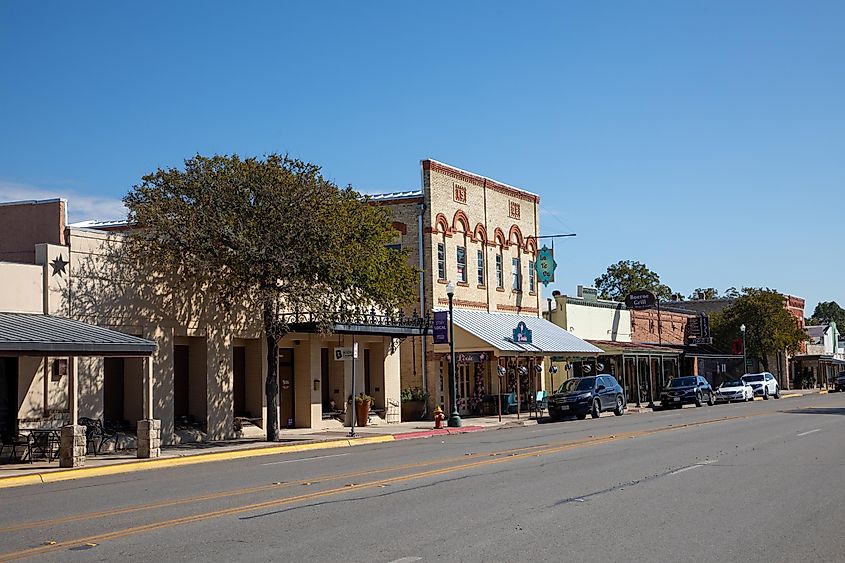
Boerne’s downtown developed around a German free-thinking community in the 1850s, and that philosophical origin, reflected in its original name, “Tusculum,” after Cicero’s villa, still shapes its civic layout. Instead of a formal courthouse square, Boerne’s historic district runs along Hauptstrasse (Main Street), anchored by the central Main Plaza Park with a limestone bandstand. The town’s original plat included green space as a civic necessity, not decoration. This decision gives Boerne one of the most accessible, open-air downtowns in Texas, with natural traffic flow, creekside access, and built-in venues for public use.
Bear Moon Bakery, located in a 1915 storefront, serves breakfast pastries and Hill Country Benedict on a wraparound porch just off Main. Down the street, The Dienger Trading Co. combines a café, bookstore, and boutique inside a former dry goods building dating to 1884. Cibolo Creek flows behind the shops, River Road Park follows the water’s edge with benches shaded by cypress trees and regular sightings of herons and turtles. The AgriCultural Museum and Arts Center, a mile from the plaza, maintains a blacksmith shop, historic tractors, and community art exhibits in a repurposed barn.
Gonzales
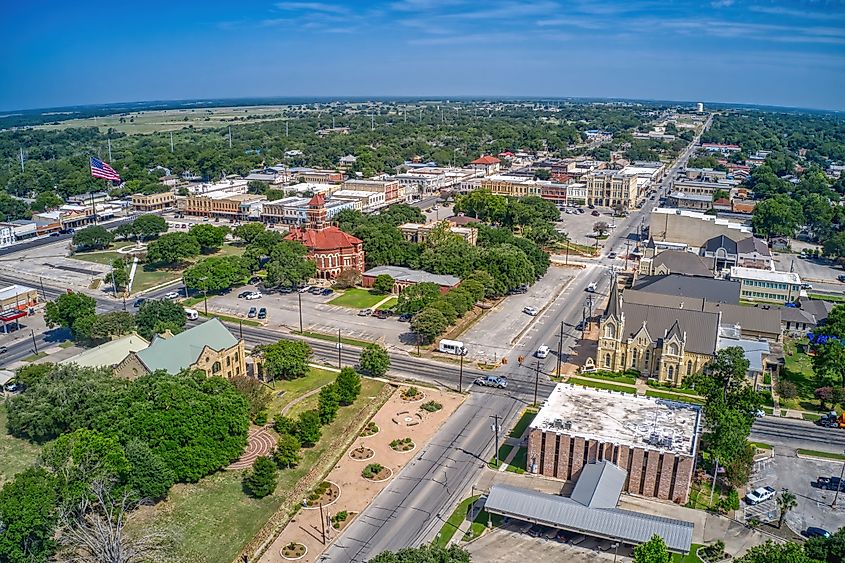
Gonzales occupies a unique place in Texas history, it was the site of the first shot fired in the Texas Revolution. The “Come and Take It” cannon, now housed at the Gonzales Memorial Museum, marks that origin. The town square itself remains unusually large, with the 1896 Gonzales County Courthouse centered in a broad oval of grass, oaks, and sidewalks, giving it more of a town park than a traditional square layout. The surrounding streets still follow the original 1830s Mexican land grant survey, creating wide boulevards rather than tight urban blocks. That spaciousness sets Gonzales apart from other towns its size.
La Bella Tavola, located two blocks from the courthouse, serves chicken marsala and shrimp linguine in a narrow building with pressed-tin ceilings and tall windows. On the square’s east side, the Running M Bar & Grill offers ribeyes and cold beer with a view of the courthouse lawn. Across from it, the Gonzales County Jail Museum, inside a decommissioned 1885 jail, keeps rusted keys, original cells, and law enforcement records. Independence Park, a short drive down St. Louis Street, includes a pecan grove, fishing spots along the Guadalupe River, and WPA-era stone buildings still in use for local events.
Goliad
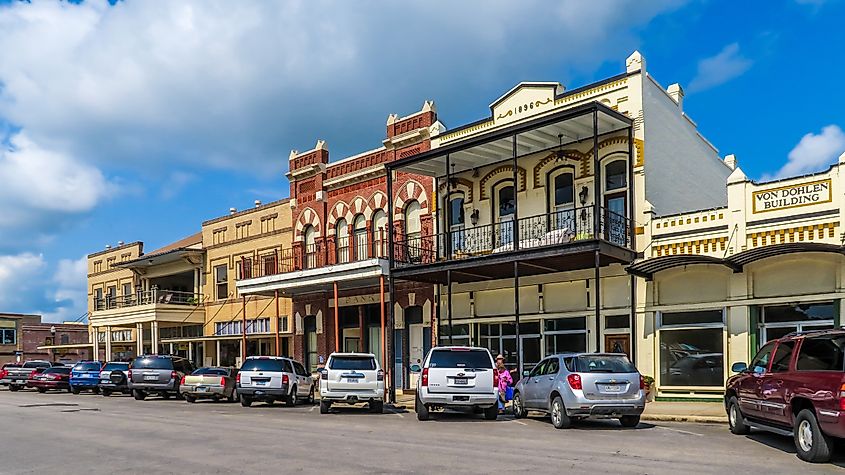
Goliad’s identity is inseparable from its role in Texas independence. The 1836 Goliad Massacre, where over 300 Texian soldiers were executed under Mexican command, occurred just outside town and remains central to its historical layout. The square itself, anchored by the Goliad County Courthouse (1894), follows a classic four-block plan but is surrounded by more than commercial buildings, it’s flanked by churches, veterans’ halls, and heritage homes still in use. Unlike many towns, Goliad has preserved not just facades but full-use civic functions around its plaza.
La Bahia Restaurant serves carne guisada, enchiladas, and burgers in a converted home one block off the square. Across the street, the Hanging Tree stands in front of the courthouse lawn, once used for frontier justice. Presidio La Bahía, a Spanish fort built in 1749, sits less than a mile away and includes a chapel, officers’ quarters, and Fannin’s execution site. Goliad State Park borders the mission complex, where Mission Espíritu Santo has been reconstructed using period methods and runs active interpretive programs. The square hosts monthly markets and parades, but it’s the quiet continuity of courthouse, church bell, and mission wall that gives Goliad its tone.
Texas doesn’t hide its character on freeways; it keeps it on the square. In these eight towns, history isn’t staged; it works a daily shift: courthouse clocks, theater marquees, smokehouses, river landings, mission walls, and creekside parks. Each block offers a seat, a story, and a plate of food within reach. Visit any one and the pattern becomes clear: civic space first, commerce second, memory threaded through both, in Texas.
